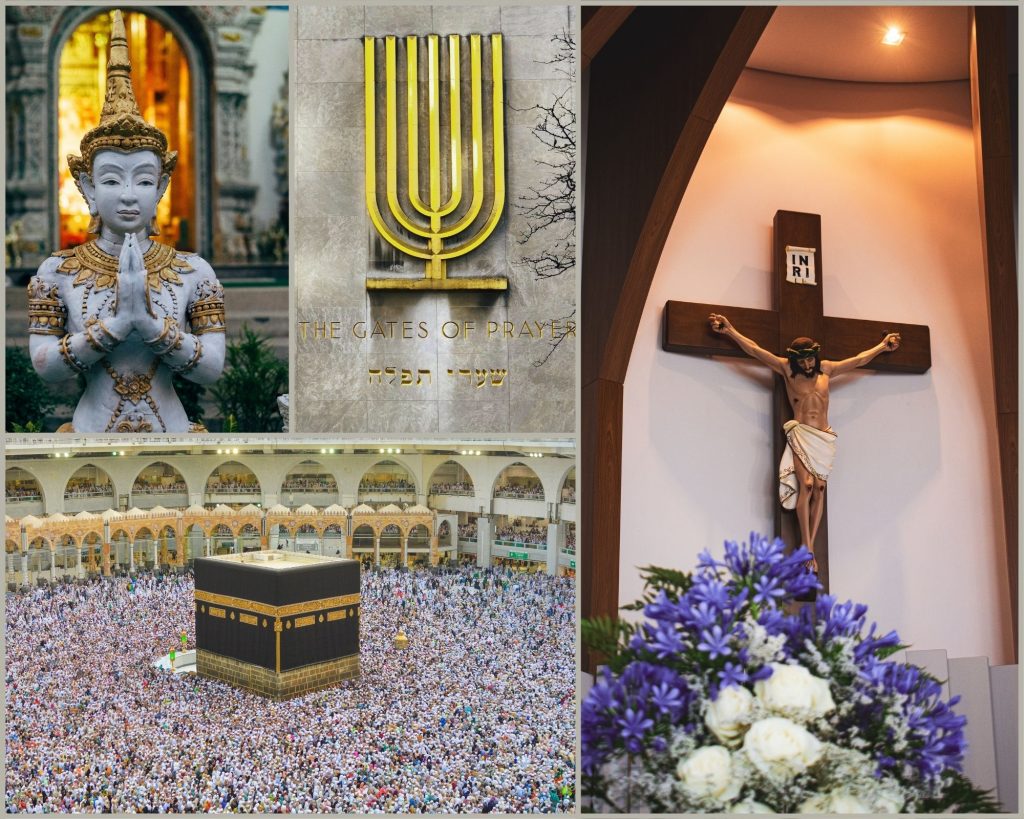Depictions of Religion in YA Literature
Note: This is the final post in a three part series. You can start here, but you might find it worthwhile to read the first and the second post in the series!

As I’ve previously discussed, content analysis can be used to investigate picture books. It can, of course, also be used to explore patterns in traditional novels and young adult (YA) literature. One area of YA literature that has traditionally been considered “taboo” to include is religion—especially positive depictions of religion. But as YA literature embraces a more diverse portrayal of young adults, wouldn’t that also include diverse depictions of their religious beliefs? To answer this question, Dr. Alspach and I set out to conduct a content analysis of recent YA literature.
We had three primary research questions:
1.) To what extent is religion referenced in contemporary young adult fiction?
2.) How diverse is that representation? Which religions (or areligious beliefs) are most often included? How well does this reflect the actual landscape of young adult religious practice?
3.) When religion is discussed, is the representation positive, negative, neutral or mixed/complicated?

Sample
Selecting a sample for content analysis can greatly influence the results of the study. Are we looking at all published books? The popular ones? The award winners? We chose to use several lists compiled by the American Library Association since many teachers and librarians use these lists to select which new books to purchase and use in the classroom. We used several different lists so our sample would represent both “good” literature and “popular” literature. The lists we investigated produced a research sample of 38 books, including fiction and nonfiction in a variety of formats.
Procedure
Each novel was read and coded independently by two of the three researchers. We examined the books looking for overt, explicit religious references, including the direct identification of religious ideas and affiliation (i.e., a narrator or character identifying someone as atheist or Protestant or Catholic, references to deities or religious organizations, etc.), religious personnel (priests, monks, bodhisattvas, etc.), religious artifacts and apparel (i.e., prayer beads, prayer mats, crucifixes, hijabs, etc.), or religious activity (i.e., service attendance, prayer, etc.). Our coding framework also included identifying which religion was mentioned and the depth of the reference: “background,” “supporting,” or “central” to the story. After each reader had independently coded the texts, we compared results and found a high level of inter-rater reliability in all categories.

Photo by Adli Wahid on Unsplash, Photo by Mateus Campos Felipe on Unsplash
Findings
Although we found many interesting aspects of the texts we coded (and wound up with many new questions), here’s a very brief summary. The majority (87%) of the books had some religious reference—ranging from mentioning a hijab to a deep exploration of religious identity. The most commonly depicted religion was Christianity, but other contemporary religions represented in the books included Islam, Buddhism, Judaism, atheism, voodoo, Baha’i, Zoroastrianism, and even fairly small sects such as Hutterites.
Previous literary scholars, such as Campbell (1994), had identified the propensity for young adult texts to portray religion and religious figures in a manner that merely vilifies those religious traditions. We were curious to see if texts had changed in that regard, and when we coded our sample, we found that they had. We noted 20% as neutral in their religious depictions, 10% as predominantly negative in their depiction, and about 13% of the texts as purely positive in their depictions. For the majority of the texts (55%), the religious representations were mixed or complicated.
Implications
Beyond satisfying our curiosity, this content analysis offers some insight into the current state of YA literature. The books in our sample depict a variety of religious viewpoints and reactions to those viewpoints, reflecting some of the diverse experiences young adults have in terms of religious engagement. These depictions offer young adults an opportunity to see themselves in their literature as well as to learn about the beliefs and practices of others.

Looking for these patterns and trends through content analysis offers a different way of looking at what’s important to our culture—the stories we create and consume both shape and are shaped by our perception of the world. The study of literature and social science research may at first seem an odd pairing, but at their heart, they are both ways of trying to understand human nature and behavior, investigating how we perceive the world and how we share our ideas, and, if we’re really lucky, sometimes that includes a really snazzy data visualization.
Think about what you’ve been reading lately: what do you think it might say about the culture that produced it and about you as someone who consumes it? Share your thoughts below.

References
Campbell, P. (1994). The sand in the oyster. Horn Book Magazine, 70(6), 756–759.
Travis, E.J., Alspach, B., & Keith, A. (2020). Let’s talk about it: Representations of religion in young adult literature. Manuscript in preparation. California Baptist University.
0 Comments